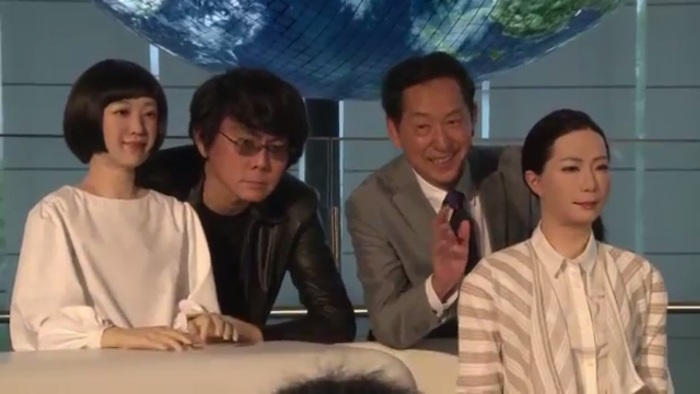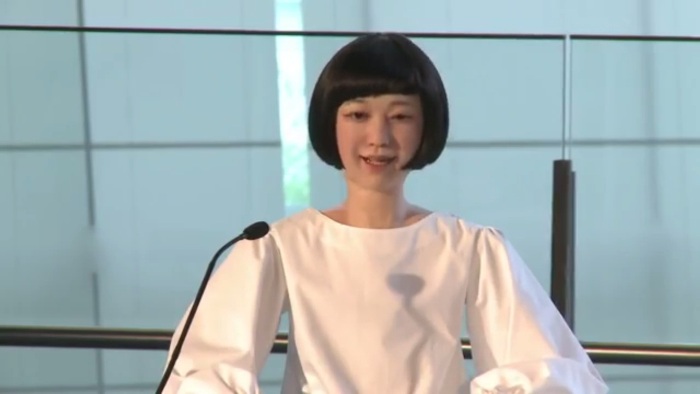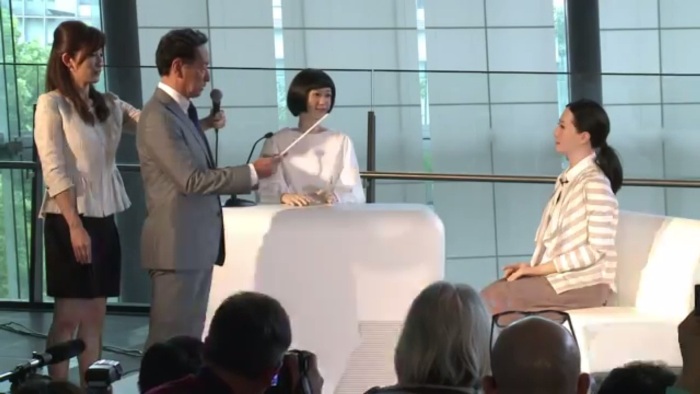Meet Kodomoroid and Otonaroid, the World’s First ‘Android Newscasters’
The Land of the Rising Sun is easily associated with high technology. It is also associated with weird or odd things. Sometimes, things in Japan also get a little creepy. If you are looking for something that combines all the techie, the odd, and creepy, you can expect it to be Japan-made. This is something exemplified by the unveiling of two new androids in Japan — android newscasters.
In what can be considered as the real demonstration of “robotic news reading,” Japanese scientists unveiled two new androids with newscasting capabilities. Make no mistake, the term androids here don’t refer to devices that bear the Android operating system. These are real androids or robots resembling humans created under the leadership of Professor Hiroshi Ishiguro, director of the Intelligent Robotics Laboratory at the Osaka University Graduate School of Engineering Science.
The android newscasters were demonstrated in an exhibition called “Android: What Is a Human?” Japanese scientists at Tokyo’s National Museum of Emerging Science and Innovation or Miraikan unveiled two androids that are supposed to be Japanese newscasters. However, you will probably have reservations believing the claim that they are the world’s first android news-readers, because they are unlikely going to have broadcasting careers. As announced, they will be staying at Miraikan. They are unlikely going to have their own primetime newscasts or TV shows on national Japanese TV or even on local TV stations.
The two androids are named Kodomoroid and Otonaroid. The latter appears to be female (from the name to the looks) but the former has a rather gender-neutral name although it is dressed as a female.
Kodomoroid
Kodomoroid is the younger-looking of the two androids. The name is a portmanteau of “kodomo” and “android.” Kodomo is a Japanese term for “child.” Kodomoroid appears to be an adolescent female with a youthful voice. During the demonstration, it delivered a news regarding an earthquake. It also read news about a raid conducted by the FBI. Kodomoroid appears very confident as it interacted with people around her. It even joked about its creator, Professor Hiroshi Ishiguro, saying that he was “starting to look like a robot.”
Otonaroid
The older looking android, Otonaroid has a character opposite to that of Kodomoroid. It’s unclear if it was part of the script but the android supposedly had stage fright that a system reboot was needed. Otonaroid said “I’m a little nervous” and fluffed its lines when asked for an introduction. Otonaroid’s name is a mashup of “otona” which means an adult female and “android.”
Both Kodomoroid and Otonaroid will be working at Miraikan, interacting with visitors and doing presentations. Their interactions will be recorded to collect and analyze information about human interactions with machines. Also, in addition to these androids’ news-reading skills, they can also read tweets in various voices.
Impressions
The new Japanese androids are still nowhere near perfection. They still look very unnatural although their voices already seem passable. The mouth movements, in particular, are hardly in synch with the voices. Their hand and body movements also don’t look fluid enough. The silicon faces are somewhat creepy because they may look like real humans at a quick glance but you’ll eventually realize they are not.
It’s difficult to say if Kodomoroid and Otonaroid can be considered as breakthroughs in robotics and artificial intelligence. They don’t offer that much improvement over other similar robots equipped with artificial intelligence and abilities to interact with humans. The facial expressions still leave a lot to be desired. The mouths, more notably, hardly simulate real human speech. Nevertheless, it can be said that there have been improvements no matter how marginal they are. Maybe we just need to be a little more patient until scientists finally develop the technologies to make androids act in the same way they are depicted in sci-fi movies.
Earlier this month, SoftBank, a Japanese company, announced its line of “emotional” personal robots called “Pepper.” Pepper, however, is not an android. It only has a somewhat human-like figure and great artificial intelligence that makes it pleasantly talkative, but it does not look human at all. Also, Pepper does not walk using its legs. Pepper’s distinctive attribute is its being chatty and sensitive to its human companions. It’s meant to be interactive but not in the same way as Kodomoroid and Otonaroid are designed to do.


